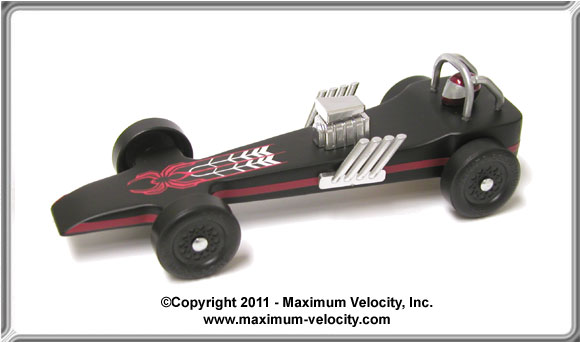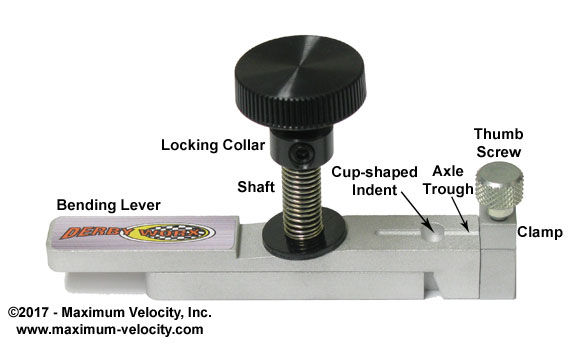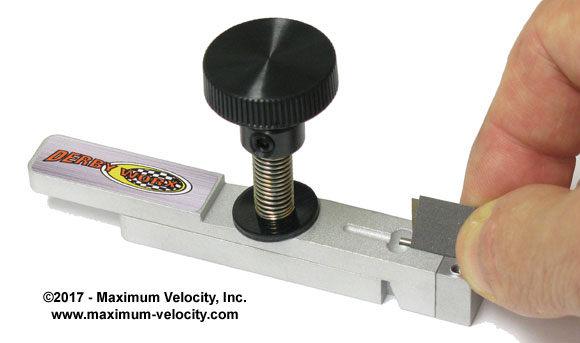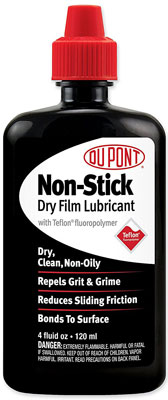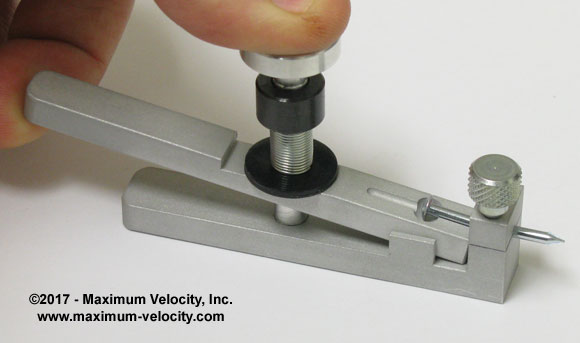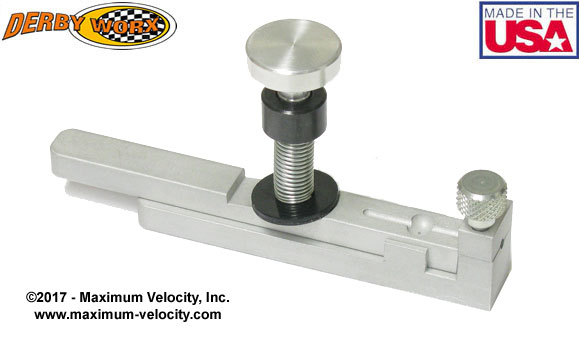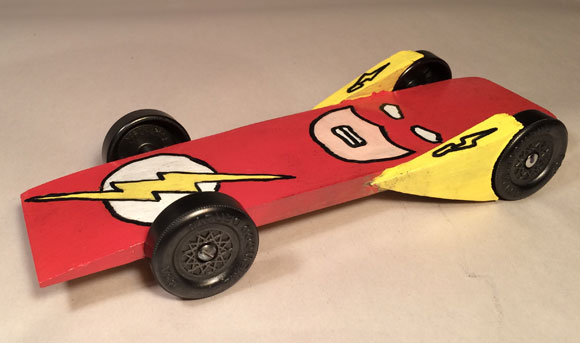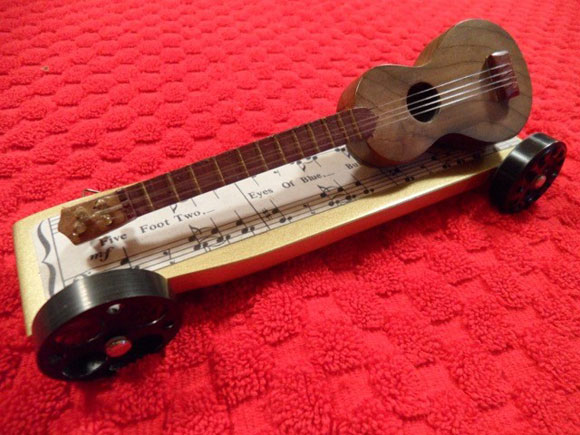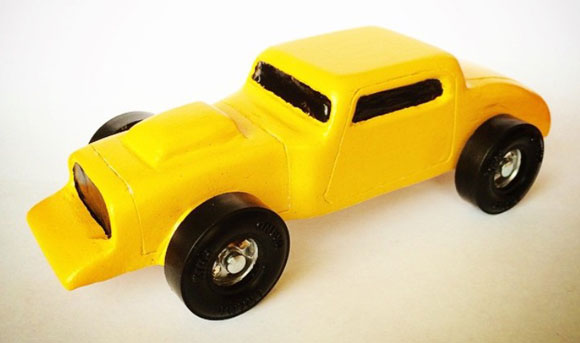– Feature Article – Using the Pro-Axle Bender
– Humor
– Product Showcase – Pro-Axle Bender – 10% Off ($7.99 Off)
– Pinewood Derby Car Showcase
– Pinewood Derby Memory – New Track Record
– Q&A
Editor’s Notes
MV Basic & Wedge Car Kits

– Quality Block – Unlike the blocks provided by some organizations, our blocks are soft, northwestern pine blocks, cut precisely to 7 inches long, 1-3/4 inches wide, and 1-1/4 inches tall. These dimensions, as well as the axle slots accurately duplicate the dimensions of standard pinewood derby blocks from BSA and PineCar.
– Simple Axle Preparation – Don’t worry about filing off flaws, or losing hub caps. Our Speed Axles have no burrs or crimp marks, and install without hub caps. With or without polishing, they are ready to go. We supply five, so you have a spare.
– Quality Wheels – Forget cheap, out of round wheels. Our MV wheels are top-quality wheels. You will not be disappointed with the quality of these wheels.
So, if your organization does not mandate a particular kit type, consider our MV Basic Car Kits or MV Wedge Car Kits. We also offer bulk packs of MV kits in Pre-cut Shapes.
Call for Car Photos
Help, we are virtually out of photos for the pinewood derby car showcase. Please send us a photo of your car along with a description of any special features to:
in**@**************ty.com
Please include your full name. If selected, we will include the photo and description in this newsletter.
Photos must be sent by e-mail in JPG format (minimum size of 640×480, maximum size of 1280 x 960). Please shoot photos from the front left of the car, similar to the orientation of this car:
Make sure the photo is not blurry. If your photos are blurry, try holding the camera four or five feet away from the car, and then use the camera’s zoom to fill the frame with the car. Also, use a solid (preferably white) background for the photo.
Send only one photo per car, unless an additional photo is needed to adequately show a feature. Don’t forget to include your name, the name of the car (if it has one), and a brief write up on any design features, inspiration for the design, and how the car performed at the race. Thanks.
Inventory Clearance Sale
We are clearing inventory on several items including:
– Tundra and tungsten weights
– Formula One car kits
– Paint Stencils
We don’t have many left, so don’t delay. You can find these items Here.
Can We Help?
If we can help you in any way with your pinewood derby project, or if you have any feedback regarding this newsletter, please Contact Us.
Feature Article
Using the Pro-Axle Bender
By Randy Davis
Prior to 2013, the Pro-Axle Press and Pro-Rail Rider tools were the only commercially available tools for bending axles. These tools work fine, but have a few limitations:
1. Limited to zinc-plated steel axles – stainless steel and titanium axles cannot be bent with these tools.
2. Dependent on axle diameter – the Pro-Rail Rider tool was designed only for axles with approximately a 0.086 inch OD (BSA size). If axles of this size are aggressively polished resulting in a reduced diameter, the axles cannot be bent without the introduction of a paper or card stock shim.
3. Limited to 1.5 and 2.5 degree bends.
In 2013, the Pro-Axle Bender(1) was introduced as an elegant solution for bending axles. Not only did the tool resolve all of the above limitations, it also is much easier to use.
In the intervening years, I have used the Pro-Axle Bender to bend a large quantity of axles, and in so doing have learned a few tricks. So today’s article will detail how to get the best use of the Pro-Axle Bender.
Figure 1 – Pro-Axle Bender Parts
Tool Preparation
The body of the Pro-Axle Bender (hereafter referred to as the “Bender”) is made from aluminum. Prior to assembly it is tumble polished to soften the edges and create a consistent brushed finish. Unfortunately, the finish is slightly rough, so it can scuff an axle while it is being inserted into the tool. So I recommend polishing the axle trough with some fine grit sandpaper.
1. Remove the thumbscrew and clamp.
2. Wrap a small piece of fine grit sandpaper (800 or finer) around the smooth shaft of a small drill bit (1/16 inch works fine).
3. Place the sandpaper into the trough, and with medium pressure move the paper back and forth for 10-15 seconds.
4. Wipe out the trough with a soft rag and replace the clamp and thumbscrew.
Figure 2 – Polishing the Trough
Next, applying a lubricant into the trough will help preserve the finish of the axle. This should be done before each axle bending session.
If you plan to use Krytox 100 for your wheels and axles, you can apply one drop into the trough and wipe off the excess. However, if you plan to use graphite, then I recommend a dry lube (not graphite). I use Dupont-brand “Non-Stick Dry Film Lubricant” which you can find at many locations including Amazon. The lube consists of Teflon suspended in alcohol. To apply, shake the bottle thoroughly, apply one drop into the trough, and allow it to dry (this takes just a few seconds). If too much lube is applied, just wipe it off with a soft rag.
Figure 3 – Dry Lubricant
Establishing An Angle
The Bender is equipped with indexing marks on the shaft to help identify the bend angle. However, the amount of bend is dependent on the type of axle, and somewhat depending on the spring that surrounds the shaft. So before bending production axles, you will want to use a spare axle to establish the desired bend. The Bender instructions include guidelines for various angles. In the setting column of the instructions, “Full” means that the locking collar is at the top of the shaft, while the numbers 1, 2, and 3 indicate the index lines counting from the top of the shaft.
A few pointers for establishing the angle:
1. Start with a bend angle less than the desired angle. You can always move the collar further up the shaft and bend the axle more, but you cannot “unbend” an axle if the angle is too much.
2. Always use an axle with no burrs or crimp marks on the shaft, as these defects could damage the tool.
3. The collar is locked with a 3/32 hex key (not included with the Bender). Make sure to firmly tighten the collar, but don’t over-tighten.
4. The commonly used angles of 1.5 and 2.5 degrees are not magic angles. If the angles you establish are in the ballpark, you will be fine.
5. To determine the angle of a bent axle, you can use the chart and information located Here.
The actual PDF chart is Here, but make sure to read the “Preparation” and “How to use the gauge” sections before measuring an angle.(2)
Bending An Axle
1. First, mount the axle in the Bender with the axle head centered in the cup-shaped indent. You can adjust the axle forward or backward if desired, but centering the axle head generally works fine.
2. Tighten the thumb screw snuggly, but do not over tighten.
3. Place your thumb on top of the shaft, and use your index finger to lift up on the bending lever. Lift until the tool stops. Do not squeeze tightly, as the spring could distort, resulting in a larger than desired angle.
4. Release the lever and remove the axle.
5. If the bend angle is not enough, move the locking collar slightly up the shaft, and repeat the above steps.
Figure 4 – Bending An Axle
The Bender instructions recommend marking the “12 o’clock” position of the axle head with a marker before bending. You can certainly do that, but it does add a level of complication when inserting the axle into the bender. I have found that the mark is not really helpful when mounting axles or aligning the car.(3)
Conclusion
The Pro-Axle Bender can greatly simplify the task of bending axles. But if you take the time to properly setup the tool you will improve your results which will translate to better performance on the track.
(1) In late 2017 after this article was written, DerbyWorx introduced a new version of the Pro-Axle Bender. The differences between the new version (Figure 4) and the previous version (Figures 1 and 2) are cosmetic and relate to manufacturing cost. Since the two versions are identical in function and usage, I chose to not re-shoot the first two photos for this article.
(2)Thanks to Stan Pope for making this chart available.
(3) For information on aligning a car with bent axles, please view Rail-Rider Alignment Walk-through
Humor
It’s a sunny morning in the Big Forest and the Bear family are just waking up. Baby Bear goes downstairs and sits in his small chair at the table.
He looks into his small bowl. It is empty! “Who’s been eating my porridge?!” he squeaks.
Papa Bear arrives at the table and sits in his big chair. He looks into his big bowl. It is also empty! “Who’s been eating my porridge?!” he roars.
Mamma Bear puts her head through the serving hatch from the kitchen and yells, “For goodness sakes, how many times do we have to go through this? I haven’t made the porridge yet!!”
Product Showcase
Pro-Axle Bender – 10% Off ($7.99 Off)
Accurate Alignment= Greater Speed!
The Pro-Axle Bender provides a simple and repeatable method for bending pinewood derby axles. This allows rear wheels to run canted, and/or the front dominant axle to be aligned for rail-riding or straight alignment. Accurate alignment is one of the five keys to producing a fast pinewood derby car.
The Pro-Axle Bender will work with axles from BSA, Awana, MV, PineCar, and many others. The tool will bend zinc and nickel-plated steel axles, as well as stainless steel and titanium axles.
Through January 23, 2018, you can get a Pro-Axle Bender for 10 percent off. To take advantage of this limited time offer, add part 5198 to your shopping cart and use coupon code JAN10NL during checkout.
Pinewood Derby Car Showcase
The Flash – Duc and Noah Pham
My son and I are big fans of your newsletter! Here is a picture of my son’s car from last year. We like watching the TV show, “The Flash” and thought, “How perfect would that be for a pinewood derby car.” He wanted a fender car so he made them out of balsa wood and used an old pinewood derby wheel with sandpaper glued to it to shape the fenders to fit the wheel. “The Flash” took first place at the pack and district races, and was voted the den’s “Best in Show”.
Music on Wheels – Bruce Edney
This car was designed by my 8 year old grand daughter. All Ukulele parts are hand made. The body wood is maple.
’32 Ford – Randy
This is a ’32 Ford we built for my daughter’s race a couple of years ago. Our expectations were pretty low, but we ended up finishing 3rd overall in speed and 2nd for design.
Share Your Car With Our Readers
Do you have a car you would like to “show off” to our readers? If so, send us a photo of your car along with a description of any special features to:
in**@**************ty.com
Please include your full name. If selected, we will include the photo and description in this newsletter.
Photos must be sent by e-mail in JPG format (minimum size of 640×480, maximum size of 1280 x 960). Please shoot photos from the front left of the car, similar to the orientation of this car:
For better focus, keep the camera four or five feet away from the car, and then use the camera’s zoom to fill the frame with the car. Also, use a solid (preferably white) background for the photo.
Send only one photo per car, unless an additional photo is needed to adequately show a feature. Also, only one car per subscriber per year please. Thanks.
Pinewood Derby Memory
New Track Record
We have a “Sponsor” race after our Cub Scout race. Anyone can race for a donation of $100.00. The winner gets a big trophy and keeps it for a year. It then has to be returned to the Pack. This year, we had eleven sponsors.
I explained the pinewood derby to our minister and asked if she would like to race a car. She seemed excited about it, so we built a three-wheeled rail rider together, She worked with me polishing bores, using the concentricity gauge, etc. I practiced with her on being last to stage the car, stay and watch the car in case someone bumps it, etc. She became a master of it.
She won the race and the crowd began to cheer. She didn’t know why. The Pack leader pointed to the big screen where it said, “New track Record”. She said, “That’s so nice of them to tell me that”.
What a lovely person she is.
Bill Klingler
Do you Remember?
If you have a pinewood derby story that is funny, unusual, sad, heart-warming, etc., please send it to me in an e-mail. Don’t worry about literary polish. We will edit as needed before publishing. If your story is used, you will receive a $10 coupon in May of 2017.
Q&A
Q: Are there any weights that are more dense than Tungsten?
A: Only a few metals are denser than tungsten. They are either very expensive, or are radioactive. Pure tungsten has essentially the same density as gold, and is the densest metal that is practical for use as a weight.
The densest metals are shown below sorted by density. Prices for the heaviest six metals are current industrial (bulk) pricing. If these metals were shaped into a usable form (cylinders, cubes, etc.) and sold at retail the price would be considerably higher.
Some prices were converted from troy ounces to Avoirdupois (common) ounces to maintain the comparison.
grams/ml $/oz Element name
19.32 $1,170 Gold
19.35 $3 – $8 Tungsten (price depends on purity and shape)
19.84 $42,524 Americium (radioactive)
20.20 $1.48 Uranium (radioactive)
21.04 $80 Rhenium
21.45 $840 Platinum
22.40 $884 Iridium
22.60 $364 Osmium
Q: I read with interest the analysis of the Air Guides that fill the inside of the wheels. Two questions:
A) In a rail riding situation, does the Air Guide hit the guide rail?
B) With the deflectors glued to the body, how do you use a gap tool to set axle body gap?
A: Thanks for your interest.
1. The Air Guides have an inset which is oriented to the bottom of the wheel, so the Air Guide does not touch the guide rail.
2. You have to eyeball it. You can get reasonably close by noticing the spacing between the axle head and the outer wheel hub. Note that the gap measure has only a trivial effect on performance unless the gap is extremely small.
Want Answers?
Do you have a pinewood derby-related question? If so, e-mail us your question.We answer all questions by e-mail, but not every question will appear in the Q&A section of the newsletter.
Back Issues
Are you a new subscriber, or have you missed some of the previous newsletters? Don’t miss out; all of the issues for Volume 5 through Volume 17 are posted on our web site Here.
Newsletter Contributions
We welcome your contributions. If you would like to contribute an article, a web site review, a speed tip, or a pinewood derby memory, please e-mail us.
Subscription Information
The Pinewood Derby Times is a free e-newsletter focused on pinewood derby racing. It is published biweekly from October through March.
If you haven’t already done so, please forward this issue to your pinewood derby friends. But please don’t subscribe your friends. Let them decide for themselves. Thanks.
If this newsletter was forwarded to you, why not subscribe to receive this newsletter. There is no cost, and your e-mail address is safe, as we never sell or share our distribution list.
To subscribe, send a blank e-mail to
pi*********************@*******st.com
You will receive a confirmation e-mail. Reply to the confirmation e-mail and you will start receiving the Pinewood Derby Times with the next issue.
Randy Davis, Editor, Pinewood Derby Times
E-Mail: in**@**************ty.com
(C)2018, Maximum Velocity, Inc. All rights reserved. Please do not reprint or place this newsletter on your web site without explicit permission. However, if you like this newsletter we grant permission, and encourage you to e-mail it to a friend.
Maximum Velocity disclaims any personal loss or liability caused by utilization of any information presented in this newsletter.
The Pinewood Derby Times is not specific to, and is not affiliated with the Boy Scouts of America, YMCA, Awana, or any other organization.
(R)Maximum Velocity is a registered trademark of Maximum Velocity, Inc.
(R)Pinewood Derby is a registered trademarks of the Boys Scouts of America.
(R)Awana is a registered trademark of Awana Clubs International.
All other names are trademarks of their respective owners.

